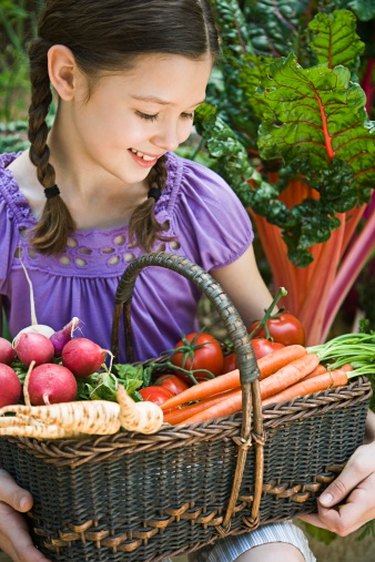
Growing fruits and vegetables in a high altitude setting -- higher than 5,000 feet -- is challenging. There are many factors to consider including poor soil, a short growing season, high winds and a lack of flat ground. However, there are crops that do well in high altitude conditions. Make their chances even better by knowing how to deal with the challenges presented.
Soil Amendments
Video of the Day
No matter what crop you're growing at high altitude, amend the soil with compost or manure on a yearly basis. Many soils at higher altitudes are poor and lacking in nutrients. They may be clay and need aeration or too alkaline for the crops. A soil test helps you decide what amendments your particular garden needs. Yearly tilling adds in nutrients and aerates heavier clay soils.
Video of the Day
Raised Beds
Raised beds are a solution to poor soils, but they do more than that. A raised bed lets you control drainage, which is a problem with clay soils. Lining it with wire mesh beneath the topsoil keeps out pests like voles and weeds. Make it deep enough for any root vegetables you plan on planting. Root vegetables, such as potatoes, shallots, onions, garlic, carrots, turnips, beets and parsnips, do well at higher altitudes.
Choosing a Location
Sunlight is essential for a good garden, but it can be harder for your garden to get enough at higher altitudes. Full sun all day is best but not always possible. Choose a location that gives your plants as much sun as possible. This is especially true for leafy vegetables. If you grow lettuce, collard, Brussels sprouts, cabbage, spinach or broccoli, have a sunny spot.
Greenhouses
Greenhouses may be necessary for growing fruit trees or tomatoes. Tomatoes need the extra heat to grow well. Fruit trees need protection from the wind. However, even with a greenhouse, you may wind up with a small crop of small fruit.
Row Covers
Row covers are lightweight covers that fit over a row of crops. They allow in sunlight and water, but also hold in heat and protect plants from winds and frost. Loosen them as the plants grow. They make it easier to grow vegetables, such green beans, some squash and potatoes, without a greenhouse.